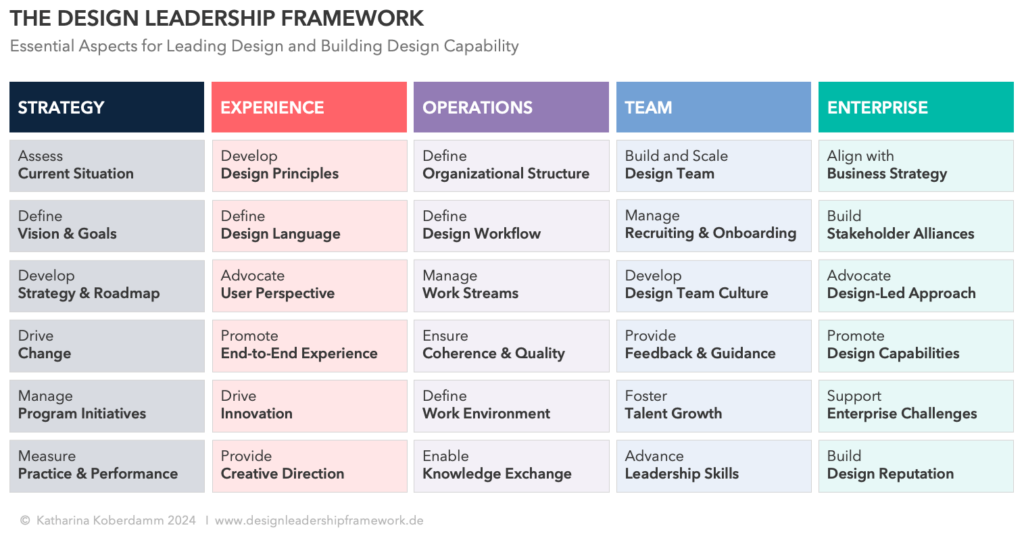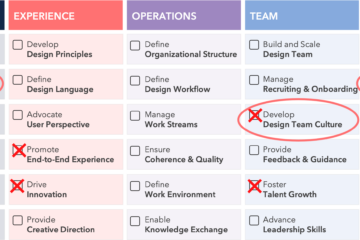I have recently made great progress on my book. As part of my research, I’ve been diving into the topic of how you can benchmark your design team. After all having a solid understanding of your status-quo is necessary to know where you should improve.
In the context of the Design Leadership Framework this activity would typically be part of the first aspect “Assess Current Situation” in preparation for creating a compelling strategy & roadmap for your team.

So, what is benchmarking?
It’s about understanding where your team stands compared to others for example in regards to ux & design maturity, application of methods and tools, design operations, and innovation practices. Here are a few interesting questionnaires and reports worth exploring:
- McKinsey Design Index and Questionnaire
- Level Up Questionnaire
- Nielsen Norman UX Maturity Quiz
- Design Ops Assembly Benchmark Report
- State of Design Sweden Report
It’s also fascinating to see how large design teams organize their design practice. Companies like Spotify, Apple, IBM, Google, Microsoft, and Slack often share insights into their design practices:
Using a SWOT Analysis to Act on Benchmarking Insights
Once you’ve gathered benchmarking data, conducting a SWOT analysis can help to make sense of your insights. Here’s how:
- Strengths: Write down the areas where your design team already performs well. These could be strong collaboration practices, a well-defined design system, or a culture of innovation.
- Weaknesses: Look at areas where your team lags behind industry benchmarks. This might include limited research capabilities, inefficient workflows, or lack of stakeholder buy-in. Addressing these gaps should be a priority.
- Opportunities: Explore external trends or emerging practices that could help your team grow. This might include expanding design ops, establishing journey management or improving accessibility practices.
- Threats: Consider risks that could hinder your team’s growth, such as limited budget, lack of stakeholder support, or difficulty retaining top design talent. Identifying these threats early can help you mitigate them.
By mapping out these areas, you have a great foundation to create a strategy that aligns your team’s strengths with opportunities while addressing weaknesses and threats. You can compliment this activity for instance with a Design Leadership Framework team assessment to also collect a more internal view on your team.
Conclusion: Benchmarking your team is not just about comparison—it’s a powerful tool for growth. By understanding where your team stands, you can identify gaps, learn from industry leaders, and create a roadmap for improvement.
This post was a part of my latest newsletter edition. Image Credit: own framework, unsplash.

Hi, I’m Katharina Koberdamm, Design Consultant and Coach. I created the Design Leadership Framework to empower design leaders to become more strategic, build a strong design function, and drive impactful change. In this blog I share my thoughts and insights from my research and coaching practice. You can find me on LinkedIn.

